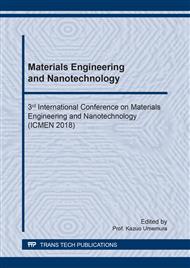p.121
p.126
p.136
p.142
p.151
p.159
p.164
p.171
p.178
The Usage of Recycled Material in Rotational Molding Process for Production of Septic Tank
Abstract:
Rotational molding is the forming process that use in produce large product, complexity product and hollow product with the limitation of process ability and material. Most of the rotational molding is a large product with a longer useful life compare to other technique, so to reused the material from other process can help to increase the competition of rotational molding in the market. This paper chooses recycled HDPE from blowing process due to it generally used by the market and not difficult to find. So in this paper choose to studies the blend of virgin LLDPE (linear low density polyethylene) and recycled HDPE (high density polyethylene) for application in septic tank by rotational molding process. Various ratio of blending were investigated to find the morphology, mechanical properties and the relation of melt flow rate and rheology. Mechanical properties are generally referred to tensile test, hardness test, impact strength and Morphology by Scanning Electron Microscope. Many studies have carried out to investigate about rotational molding forming process control, mold and process condition, some on material ability and new material to used in rotational molding to improve the mechanical properties and various technique in forming by rotational molding. But this article will investigated more about the use of recycled material from other forming technique process (which refer to blowing process in this article) to use in rotational molding process for produce septic tank compare to the commercial quality.
Info:
Periodical:
Pages:
151-158
Citation:
Online since:
October 2018
Authors:
Keywords:
Price:
Сopyright:
© 2018 Trans Tech Publications Ltd. All Rights Reserved
Share:
Citation:


